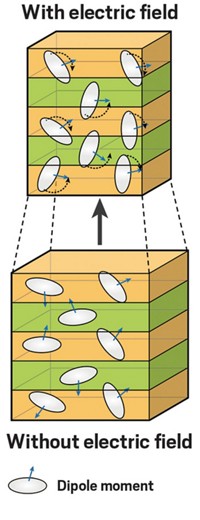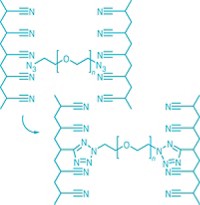Advertisement
Grab your lab coat. Let's get started
Welcome!
Welcome!
Create an account below to get 6 C&EN articles per month, receive newsletters and more - all free.
It seems this is your first time logging in online. Please enter the following information to continue.
As an ACS member you automatically get access to this site. All we need is few more details to create your reading experience.
Not you? Sign in with a different account.
Not you? Sign in with a different account.
ERROR 1
ERROR 1
ERROR 2
ERROR 2
ERROR 2
ERROR 2
ERROR 2
Password and Confirm password must match.
If you have an ACS member number, please enter it here so we can link this account to your membership. (optional)
ERROR 2
ACS values your privacy. By submitting your information, you are gaining access to C&EN and subscribing to our weekly newsletter. We use the information you provide to make your reading experience better, and we will never sell your data to third party members.
Materials
Stressing Strengthens Nanocomposites
Polymer-nanotube composites exhibit a property characteristic of bone and biomechanical tissues
by Mitch Jacoby
March 28, 2011
| A version of this story appeared in
Volume 89, Issue 13
Repeatedly stressing polymer nanocomposites can cause the materials to become stronger, according to a study by materials scientists (ACS Nano, DOI: 10.1021/nn103104g). That property, which is one of the key characteristics of bone and other biomechanical tissues, is highly unusual in synthetic materials. The discovery may lead to new types of nanostructured hybrid materials for use in load-bearing applications, including artificial connective tissues. Brent J. Carey and Pulickel M. Ajayan of Rice University and coworkers used a chemical vapor deposition method to infuse freestanding carbon nanotube (CNT) forests with polydimethylsiloxane (PDMS) and then subjected samples of the nanocomposite to repeated cycles of compressive stressing. Unlike the neat polymer, which exhibited little change in response to compression cycles, the CNT/PDMS nanocomposite’s stiffness began increasing immediately. The stiffness increased 7.5% after one day of dynamic stressing and a total of 12% by the end of a week—3.5 million stress cycles—with no indication of the effect plateauing, the team reports. The increased stiffness, though not yet fully understood, appears to result from stress-induced polymer chain alignment at the CNT/PDMS interface, which enhances interaction between the components, the researchers suggest.





Join the conversation
Contact the reporter
Submit a Letter to the Editor for publication
Engage with us on Twitter